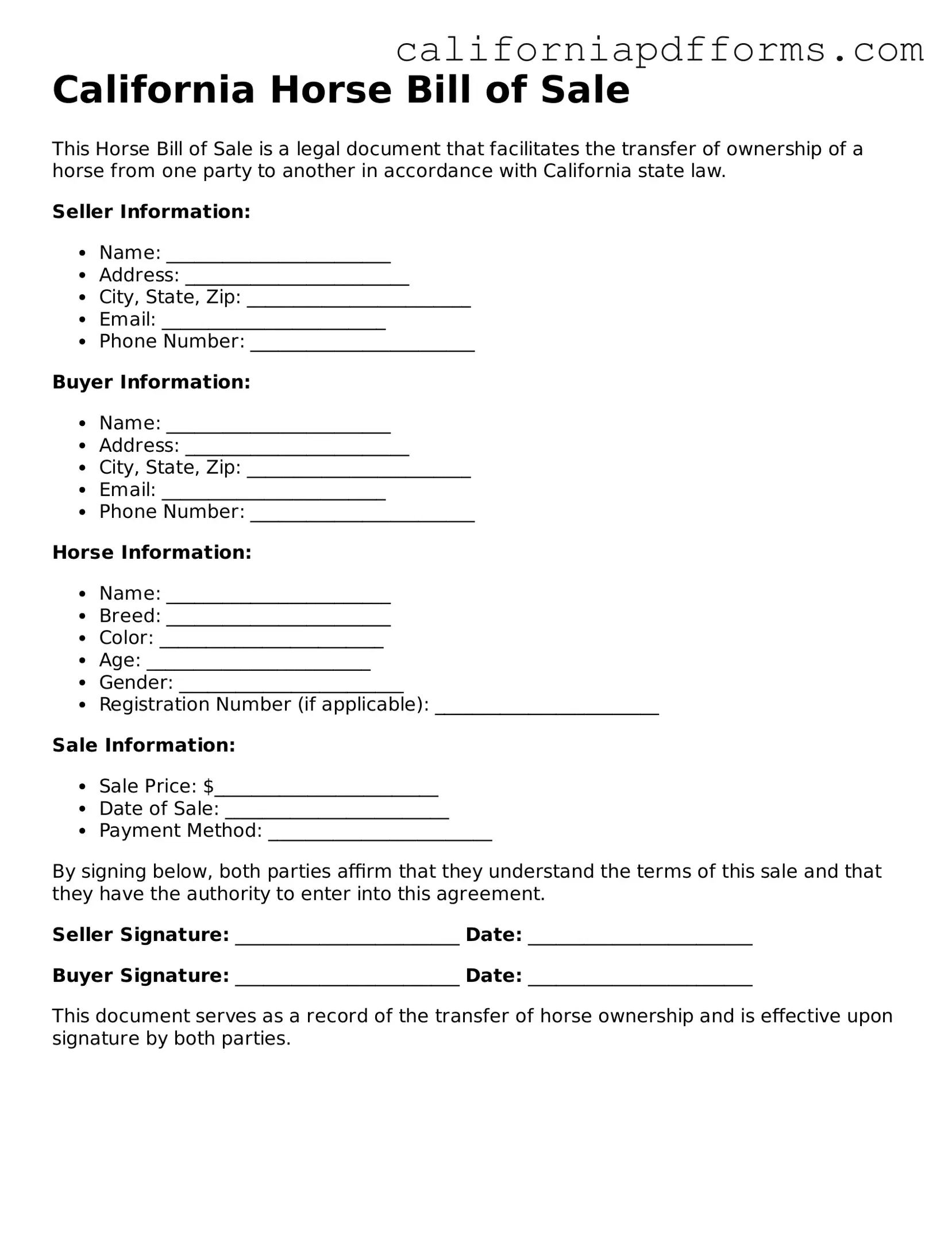Official Horse Bill of Sale Template for the State of California
The California Horse Bill of Sale form is a legal document that facilitates the transfer of ownership of a horse from one party to another. This form outlines essential details such as the horse's description, sale price, and the names of both the buyer and seller. To ensure a smooth transaction, it is important to complete this form accurately.
For assistance in filling out the form, please click the button below.
Open Your Form Online
